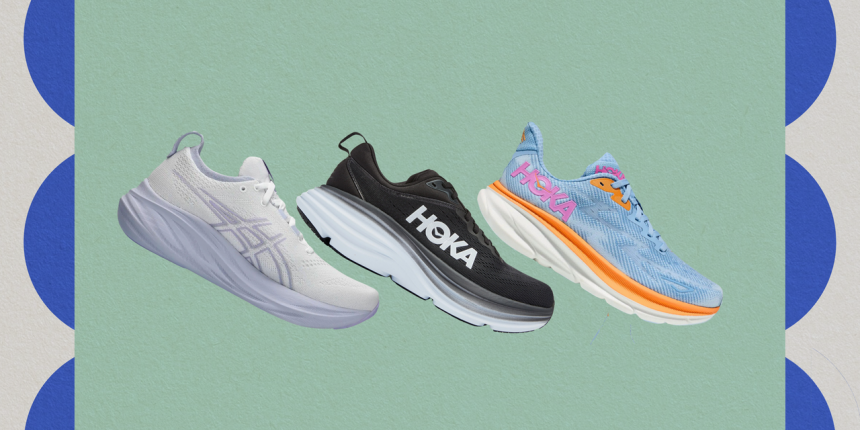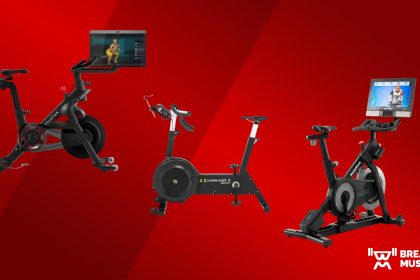- Sizes available: US 6 to 11 | Widths available: regular | Heel-to-toe drop: N/A | Weight: N/A | Materials: synthetic fabric and rubber | Colors available: 1 option
Dr. Japs considers the Vionic brand to be “above average in support and comfort,” and this applies to even its dressier shoes. The Kensley Loafer, with its thick lug sole, supportive arch, and padded insole, is a standout for people with plantar fasciitis. The fact that it’s cute certainly doesn’t hurt. “Sometimes orthopedic shoes aren’t the most fashionable, but Vionic does great work,” Dr. Japs says.
- Sizes available: US 5 to 12 | Widths available: regular and wide | Heel-to-toe drop: 19 millimeters | Weight: 9 ounces | Materials: leather, synthetic fabric, EVA, and rubber
Superfeet
Green Professional-Grade Orthotic Inserts
Superfeet’s insoles come highly recommended by podiatrists as great over-the-counter shoe inserts. The green and blue versions have different heel-cup depths and degrees of arch support. The blue ones may be easier to tolerate and get used to, Dr. Marko says.
- Sizes available: US 4.5–6 to 12.5–14 | Widths available: regular | Heel-to-toe drop: N/A | Weight: N/A | Materials: polyester and foam
Armstrong
Amerika Gel Heel Cups Plantar Fasciitis Inserts
Dr. Gamez recommends adding gel heel cups to your less plantar-fasciitis-friendly shoes. These provide support and create a softer footbed to reduce pressure and pain through your heels.
- Sizes available: small/medium and large | Widths available: N/A | Heel-to-toe drop: N/A | Weight: N/A | Materials: silicone
Dr. Scholl’s
Plantar Fasciitis Sized to Fit Pain Relief Insoles
If you’re on your feet for long periods of time, Dr. Japs recommends these reliable insoles from Dr. Scholl’s, which are designed to absorb shock and support your arches. He says that those features should relieve tension in your feet and help you feel more comfortable.
- Sizes available: US 5.5–6 to 13.5–14 | Widths available: N/A | Heel-to-toe drop: N/A | Weight: N/A | Materials: rubber
What is plantar fasciitis?
Before we get into the causes of plantar fasciitis, it’s helpful to think about the anatomy of the foot region. The plantar fascia is a fascial band or ligament that runs along the bottom of your foot, from the calcaneus, or heel bone, to the base of the toes, Eby says. It helps support the long arch of the foot and provides shock absorption while you walk and run.
Repeated stress on the plantar fascia can cause damage or small tears that may lead to inflammation. Plantar fasciitis often feels like a stabbing or aching pain in the sole of your foot, usually near your heel, which tends to be more intense in the mornings or after you’ve been off your feet for a while. According to the National Library of Medicine, this pain can be constant, but sometimes it’ll abate after you get up and walk around or exercise.
What causes plantar fasciitis?
Some factors that can make plantar fasciitis worse include tight calf muscles, repetitive high-impact activities like running, a rapid increase in weight-bearing activity, prolonged standing or walking, and flat feet or very high arches. Your choice of footwear can also be an aggravating factor, whether you’re running, walking, or standing for long stretches of time.
How to choose the best shoes for plantar fasciitis
While no footwear can promise that you’ll stay pain-free, selecting well-cushioned and more supportive shoes is a solid step (heh) toward reducing discomfort in the future. If you’re still on the lookout for the right pair of shoes for you, here’s some criteria to keep in mind while you shop. In general, the best shoes for plantar fasciitis will fit correctly (i.e., not too small and wide enough to fit your foot comfortably) and have the right amount of support. “You’ll want a shoe with a deep heel counter and plenty of midfoot arch support,” Dr. Gamez says.
You can consider pairing your shoes with orthotics or insoles that have substantial heel cups to help with cushioning and shock absorption too, Eby says. They’ll also provide additional arch support, which can offer further pain relief from plantar fasciitis, Yolanda Ragland, DPM, a podiatrist and founder of Fix Your Feet in New York City, tells SELF.
What to avoid when buying shoes for plantar fasciitis
Avoid flat, non-supportive footwear like flimsy sandals or backless clogs, Dr. Gamez says. Those cute flip-flops that sell for $1? Probably not the best plantar fasciitis shoes. The same generally goes for sneakers without arch support (unless you add orthotics, heel cups, or insoles), and flats. If you need dressier shoes for work or a special occasion, look for those with a slight heel (around a half inch) to minimize stretching on the plantar fascia, as well as styles that stay on your foot without toe gripping (i.e., one that has elastic or other straps to secure the shoe to your foot).
Related:







